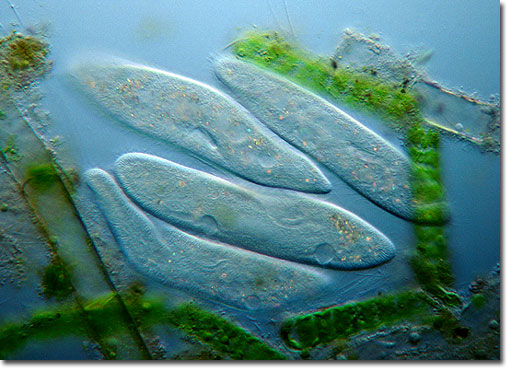|
As ciliates, paramecia are covered with numerous, short hairlike projections called cilia. The beating of the cilia is what enables the microscopic organisms to locomote through their aquatic environments, as well as to procure their meals. Water currents created by the cilia sweep bacteria and other food particles into an individualís oral groove and gullet, where they begin the transformation into food vacuoles. Other characteristic structures found in paramecia include water-regulating contractile vacuoles, two different types of nuclei, and filamentous trichocysts, which may be involved in defense or extended for anchoring purposes during feeding.
|
